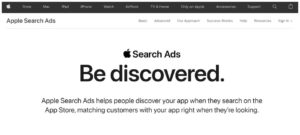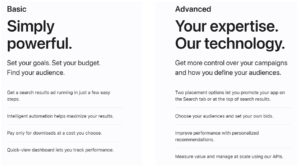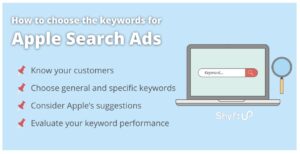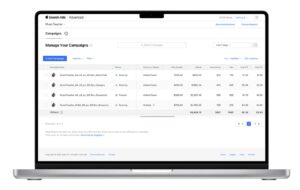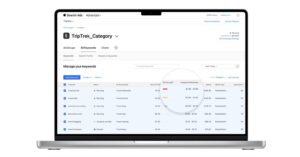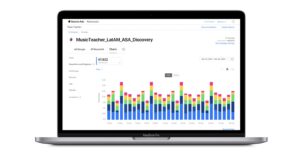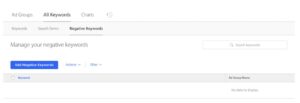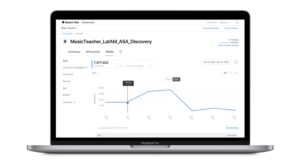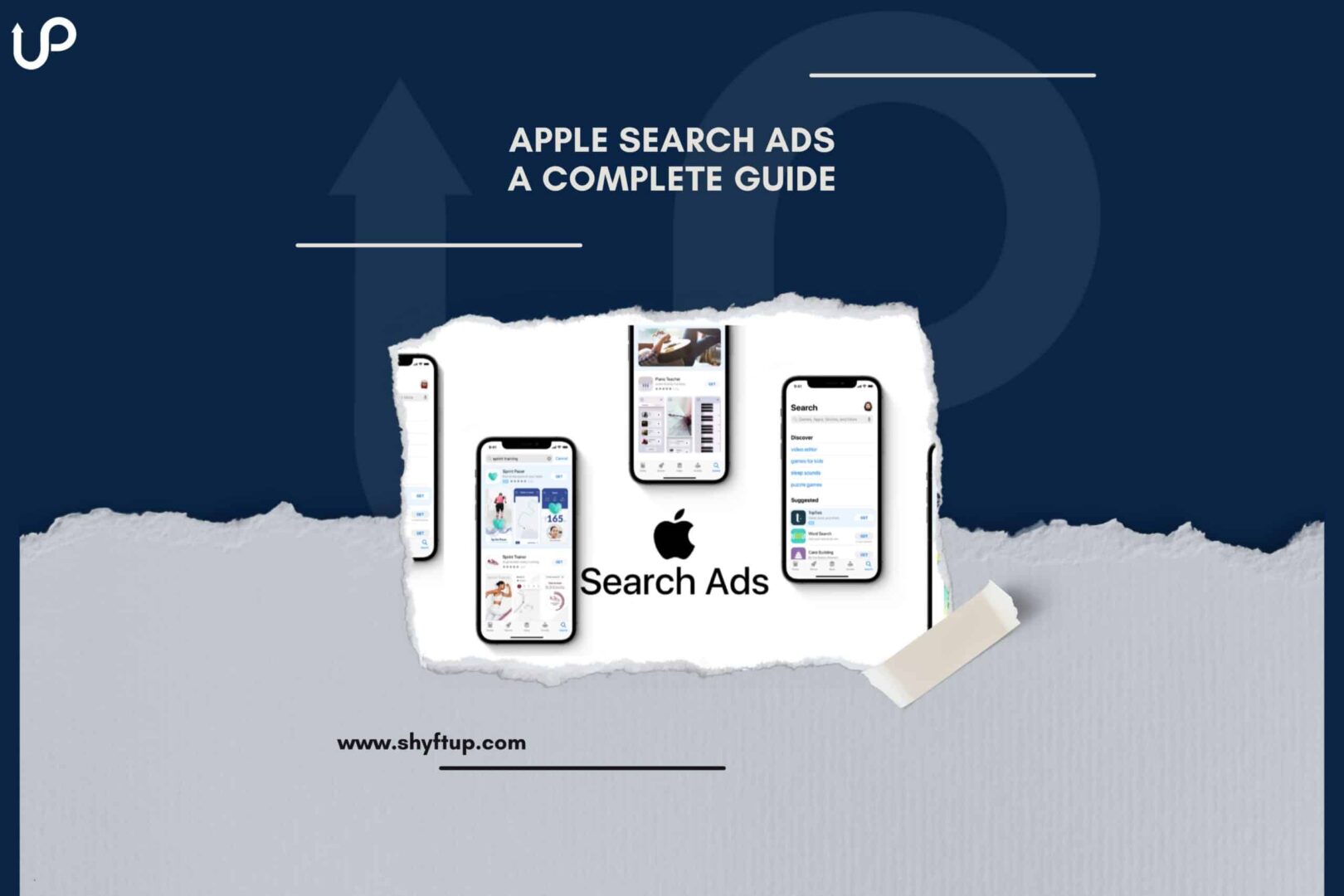
Apple Search Ads – A Complete Guide
Apple Search Ads should be a major part of your marketing effort if you wish to achieve success with your app. However, without the right knowledge of how it works, you might not be able to get the most out of it.
Thus, in this post, let us take a deep look at what Apple Search Ads are and get a deeper understanding of its basic concepts.
What you will learn:
- What is Apple Search Ads?
- Why You Should Use Apple Search Ads?
- How do Apple Search Ads work?
- Difference between Apple Search Ads Basic and Advance
- How to choose the keywords for Apple Search Ads
- How to structure your Apple Search Ad Campaign
- How do you win the Auction in Apple Search Ads
- 8 Apple Search Ads Best Practices
- How to further improve your Apple Search Ads
What is Apple Search Ads?
Apple Search Ads (ASA) is the advertising program of the Apple App Store. Introduced in 2016, Apple Search Ads have already helped thousands of mobile app developers in connecting with their target audience.
Why You Should Use Apple Search Ads?
Apple Search Ads is a relatively new platform for app user acquisition. So, why should you use it? After all, there are other paid marketing channels you can use. Channels like social media platforms, emails, and websites can all be good options as well.
So, why Apple Search Ads? Here are some important reasons:
- 70% of App Store users utilize search to find the app they need.
- 65% of app downloads happen after a user makes a search.
- Marketers who use Apple Search Ads enjoy a more than 50% conversion rate.
- More than 500,000,000 people visit the Apple App Store every week — people who would most likely use Search.
- It helps you connect not just to random people, but to a highly targeted and specific audience who has a high chance of downloading your app.
- You only pay when your ad is clicked or downloaded, which saves you money.
Image source: Search Ads
How do Apple Search Ads work?
As its name suggests, Apple Search Ads are ads placed on searches made in the Apple App Store. With the right budget and bid, Apple can promote your ad on searches and match your app to the most relevant customers.
Since there can be hundreds of apps competing for the same target audience, how does Apple decide who gets the ad spot?
The answer is through an auction. You need to place a bid for a particular keyword. Your bid should be higher than what your competitors offer. If not, then the App Store won’t display your ads.
As you can imagine, the more popular the keywords, the higher the competition is. Thus, be ready to pay more if you’re going to target top keywords.
Note that Apple Search Ads use the cost-per-tap or cost-per-install model. It means you only pay for ad placements that have been tapped on or the ads that led to installs.
Difference between Basic and Advanced
When setting up your Apple Search Ads campaign, you would inevitably need to choose between Basic and Advanced. It’s crucial that you know their differences and advantages. This way, you’ll have a better way of improving your search ads campaigns.
Here’s a quick overview of their difference as shown on the Apple website:
Now, let’s discuss each of them in greater detail.
Apple Search Ads Basic
As you can see, the Basic plan is ideal for marketers who want to test the water and just start out using ads. With the Basic plan, you can easily set up your ads, run them, and even just pay for real downloads.
Here’s a quick rundown of why you should choose Basic:
- Ideal for smaller companies
- Easy and quick to set up
- Requires less time, energy, and technical knowledge
- No need to set audience and keywords based on demographics
- Only pay for installs
- Minimal ongoing management and supervision
You can set your budget up to $10,000 per app every month. You can also promote a maximum of 50 apps simultaneously.
Apple Search Ads Advance
The Advanced plan allows you to place your ads in more strategic areas such as in the Search tab and at the top of search results. Advanced plan means advanced controls and flexibility. You can easily choose your audience and set your bids.
Here are some reasons you might want to choose Advanced:
- Full access to your audiences
- Choose which audience and keywords to target
- More control of your campaign
- No maximum budget
- No maximum number of apps to promote
- Gives you suggested bids
- Key metrics detailed reports
Perhaps for serious and bigger companies, what sets apart Advanced is the API feature. With Advanced, you can manage the application program interface (API), which allows you to create a piece of software dedicated to managing and tracking your campaigns.
Moreover, Advanced lets you create ad groups and manage keywords. These are all useful features if you’re running a huge marketing campaign that involves the coordination of multiple advertisers and teams.
All in all, if you have the money and team, choose Advanced. It has a lot of benefits that Basic can’t offer.
Should you run Apple Search Ads Basic and Advanced both?
The idea might be appealing, but it is not advisable. For one, Advanced has all the fundamental features of Basic. So, if you choose Advanced, then there’s no use in using Basic.
Aside from that, you’ll run into the risk of mixing data and blurring results if you use both Basic and Advanced.
Advanced is way better than Basic. Thus, if you have the resources, you better choose Advanced for better results.
How to choose the keywords for Apple Search Ads
How does Apple know where and when they should show your ad? The answer is “keyword.”
Keywords are the search phrases that people type in when they search for a particular app in the Apple App Store.
Thus, keywords play a vital role in app discovery. With keywords, Apple determines how to match your app to the searches made.
With the right keywords, you can effectively improve your campaign performance and even discover other avenues for app growth.
When choosing keywords, remember the following tips:
1. Know your customers
Imagine when you go fishing. Do you use a bait that you like or a bait the fish likes? You don’t use ice cream, but you use worms.
The same principle can be applied in marketing. You attract users to your app by knowing their likes, needs, and problems. By knowing who your target audience is, you’ll most likely be able to predict the search terms they will use to find your app.
Think like your customers. If you are the customer, what search terms are you going to use? Keywords can be specific or they can be generic. People may search based on brand names or they can search based on their needs.
So, when choosing keywords, consider popular brand names that are related to the product or service you offer. You can also use keywords that describe the service you provide and the problems your app solves.
2. Choose generic and specific keywords
When it comes to marketing, you want to attract as many potential users as possible. That’s why you need to use both generic and specific keywords.
Not all users are the same in their searches. Some people already know exactly what they need and thus, they use specific keywords. However, some are still exploring their options and so, they use generic keywords.
Here are a few things you need to learn more about generic and specific keywords:
Generic keywords
These keywords target a wider audience and thus, you get to reach more people. Since they are generic keywords, a lot of apps are competing for them.
Generic keywords are more about quantity rather than quality. Yes, you get to attract more people, but not all of them might be interested in your app.
Specific keywords
These keywords are more focused on what your app offers. Because they are specific, you attract fewer people. However, with specific keywords, you attract the right users.
Yes, fewer people see your ads, but at least it is the right people who are seeing your ads. So, specific keywords are more on quality rather than quality.
3. Consider Apple’s suggestions
Apple wants you to succeed in your app campaign. This is the reason you’ll find various tools within Apple Search Ads to further bolster performance.
For example, you can use Search Match so that Apple would automatically determine other keywords you might have not selected but are still relevant to your app. This means that you don’t need to identify every possible keyword because Apple will do it for you.
Aside from that, you can use Apple’s keyword suggestion tool to see other opportunities. After a few days or weeks, Apple’s Recommendations page should already give you a list of relevant keywords you may want to use.
4. Evaluate your keyword performance
You need to check your keywords and identify which of them are performing well. You can capitalize on the best-performing keywords by increasing your bids. You can also lower bids for not-so-good keywords or you can remove them entirely.
Regularly evaluate your keywords, so that you can easily adjust your budget and ensure you’re bidding for the right searches.
How to structure your Apple Search Ad Campaign
The success of your ads would most likely hinge on your campaign structure. That’s the reason that you need to set up your App Search Ads the right way to easily maximize keyword bids, track performance, and penetrate new markets.
Here are some important tips to remember when setting up your campaign structure.
1. Understand how campaign elements work
The first thing you need to do is get familiar with what campaign structure looks like and how each element relates to each other.
To start, you need to choose your budget and the countries or regions you want your ad to run. Once your campaign is set, you then need to create ad groups. Each ad group would contain your audience refinements, bids, keywords, and ad variations.
Image source: Search Ads
2. Choose the right campaign types
There are four types of campaigns, which include the following:
- Brand
- Category
- Competitor
- Discovery
Each of the campaign types serves different purposes. They also differ in their keyword, ad group, bidding strategies, and keyword match type. It is a must that you pay special attention to the first three campaign types as they dominantly affect your ad performance.
Source: Campaign Structure Outline by Search Ads
You run a brand campaign when you want to target keywords related to your company name or app.
The category campaign allows you to target keywords that are not related to brands but describe the category or genre in which your app is in.
The competitor campaign helps you to use keywords that are popularly used by your competitors or similar apps.
Here’s a pro tip: turn off the “Search Match” for brand, category, and competitor campaigns. You want to be fully in control of these campaigns and you need to focus more on the exact match type of your keyword.
Ideally, you put most of your marketing budget on these three campaign types, so you can rank better for the best-performing keywords.
3. Use discovery campaign effectively
The fourth campaign type is different from others because it helps you find new ways to improve your keyword performance and reach a new audience. The discovery campaign allows you to “discover” keywords you haven’t thought of before.
Think of discovery campaigns as a way for you to scale your audience.
Because you want to find new ways to reach people, you would need to use Search Match and broad match keywords features. With these features, Apple would automatically display your ads to any search terms that are relevant to your app.
When running discovery campaigns, Apple advises that you create two ad groups, which are the following:
- Broad match ad group – you turn on the broad match and turn off Search Match. You would also include all the keywords you use in your broad, category, and competitor campaigns.
- Search match ad group – this time, you turn off the broad match but turn on the Search Match. This ad group won’t include the keywords from your other campaigns as Search Match would automatically choose keywords you haven’t used before.
What’s so great about the discovery campaign is it can potentially identify high-performing keywords that you wouldn’t know of by yourself.
Once you have identified the right keyword from your discovery campaign, you can then add the same keywords to your other campaigns.
Repeat the process and add keywords as needed.
How do you win the Auction in Apple Search Ads?
As mentioned above, Apple Search Ads uses the auction system to determine whose ads should be displayed in search results.
If you don’t bid effectively, your ads will have limited exposure or worse, you don’t get to reach the people you want to reach.
Remember the following suggestions if you wish to know how you can effectively bid in Apple Search Ads.
1. Use bid insights
Apple wants you to make an informed and educated decision when it comes to your bids. That’s why they provide you with bid insights that will help you make the necessary adjustments.
In every keyword you placed a bid with, you’ll find the following details:
- Suggested bid range – this helps you know how much you should place your max CPT (Click per tap) bid. The range is based on various details such as the bid histories of other marketers, your bid history, and your tap-through rate.
- Bid strength – a quick look at how competitive your max CPT bid is.
Here’s what the bid strength and suggested bid range looks like in your bid insights tab.
Image source: Search Ads
2. Use bid recommendations
Apple creates a Recommendations page for you to know what else you can do to improve your bids. On the Recommendations page, you’ll find suggestions on the necessary adjustments to your CPT bids.
Please note that the max CPT bid doesn’t necessarily mean the amount you’ll pay every time. It just means that it is the max bid you’re willing to pay. However, you’ll be paying less than your max CPT bid most of the time.
3. Know how much you should spend
When it comes to prioritization, you need to put more money on exact match keywords since they are the keywords that drive the highest results.
Next, you can choose to give moderate bids on Search Match ad groups and broad match keywords.
Apple recommends that you create a separate ad group or campaign for your broad match and exact match keywords. This way, you can easily manage your bids and understand how each keyword performs.
Aside from that, you can also set a daily budget. You can do this to ensure that you have enough money for the entire month. Apple’s algorithm allows you to spend more money on high-opportunity days and be more thrifty during off days.
Image source: Search Ads
4. Learn when to adjust your bids
When you finally placed a bid, it doesn’t mean that it should stay that way forever. On the contrary, you need to regularly reevaluate your bids so you can optimize your budget.
Consider increasing your max CPT if:
- You have identified high-performing keywords that need more exposure.
- You have found new keywords from your discover campaigns.
- Apple gives you a higher suggested bid range for your keywords.
- You want to outbid other advertisers.
Consider decreasing your max CPT if:
- You have a keyword that costs you more and gives you a lower conversion rate.
- When Apple’s suggested bid range is lower than your max CPT.
5. Create ad groups
Ad groups don’t just help you track and evaluate performance, but they will help you differentiate your bidding strategies. As you can imagine, one ad group may need higher bids than others.
With ad groups, you can set your highest max CPT bids on your main target audience.
6. Monitor ad performance regularly
It is a must that you check how your Search Ads are performing. At the end of the day, you want to maximize your budget and ensure that every dollar is well spent.
Aside from that, monitoring frequently is important because of how trends, current events, and seasonality could affect your ad results.
By knowing your ad performance, you’ll have a better idea of whether to increase, lower, or cancel bids.
8 Apple Search Ads Best Practices
To further improve your ad marketing performance, here are a few things you should remember:
1. Take advantage of seasonal opportunities
There are certain times in a year that could help you boost downloads and sales. These are seasonal opportunities that you shouldn’t miss.
Depending on which country or region in the world, the most common yearly events may include:
- Diwali
- Singles Day
- Thanksgiving
- Black Friday
- Cyber Monday
- Hanukkah
- Double Digits Day
- Christmas Day
- Boxing Day
- New Year
Image source: Apple Search Ads
If you are trying to target a specific location, you can look into the biggest events and significant dates on their national calendar.
Just to give you an idea, in November and December, millions will be celebrating Christmas. Thus, you can ride into this interest and promote your app with the use of new offers and deals.
Some apps that could become more popular during this time would be those that fall into the Finance, Shopping, Food & Drink, and Travel categories.
2. Allocate the right budget
When preparing your budget, you may want to set aside bigger funding during peak seasons. This way, you still have more budget when competition becomes fiercer. If possible, set a budget not just for the month, but for the whole year.
3. Choose the right keywords
Targeting the right keywords would mean targeting the right people. At this time, you should have already done your keyword research. If not, we highly recommend you do it first.
Choose the keywords with high search volume, but with less competition. This can be tricky. That’s why you need to do your research and lay the right foundation.
4. Specify negative keywords
You want to target specific keywords, right? However, you should also specify keywords you want to exclude in your ad campaign.
Negative keywords are keywords you don’t want your app be displayed for. This means that if a negative keyword is used in a search, your ad won’t appear for that search result. In short, these keywords are blacklisted.
Let’s say you have an app that sells eyeglasses. Some people might use keywords like “wine glasses” or “drinking cups.” Obviously, these keywords don’t have anything to do with eyeglasses. So, you can add them to your list of negative keywords.
5. Be sure to have the right metadata
Before starting a campaign, reviewing your app metadata is crucial. Metadata is simply the elements of your app, which include the keywords, localized titles, what’s new text, descriptions, screenshots, pricing, territory rights, and availability.
You may ask, “why is having the right metadata important?”
The answer is that Apple creates ad creatives based on your metadata. Thus, if your metadata doesn’t properly and effectively reflect your app, Apple may run ads that don’t accurately represent you.
6. Link your App Store Connect account to your Apple ID
If you are an app developer or owner, you probably have more than one Apple ID. You might think that your personal Apple ID is a good choice, however, that will make things difficult for you.
Upon signing up for Apple Search Ads, you would be needing your Apple ID. Choose the Apple ID that is linked to your App Store Connect account. This way, you can easily promote your ads to current users. You can even add users to your audience customer type.
Aside from that, the duplication feature of Apple helps you to quickly copy your settings from one platform to another.
7. Improve country and region segmentation
This tip is for Apple Search Ads Advanced. With Advanced, you can group countries and regions with similar attributes.
For example, you can group English-speaking countries and target them with a specific campaign. You can also group regions based on seasons or customer value.
8. Track your ad performance
Tracking and evaluating the performance of your ads allow you to further improve your ad campaigns.
It’s not advisable that you only make decisions based on intuition or hunch. You need concrete numbers, graphs, and details to help you make data-driven decisions.
Tracking your ad performance has a lot of benefits. For one, it helps you decide how to optimize your bids. Do you need to lower your bid? Is it worth increasing your budget? Should you focus more on a different keyword?
All these can be answered when you have the right data and tracking system.
How to Further Improve your Apple Search Ads
Setting up Apple Search Ads can be easy, but it can easily be complicated when it comes to tracking keyword performance, evaluating results, and gathering data.
If you want to waste no time and ensure every decision you make leads to an increased conversion rate, then you need to get in touch with ShyftUp.
ShyftUp is among the best app user acquisition agencies on the planet. With their extensive knowledge, reputable track record, and cutting-edge technology, they can help you set up your Apple Search Ads in the best way possible. Plus, they offer a wide range of services that will surely bring your app to a whole new level of success!
Why You Should Use Apple Search Ads?
Difference between Basic and Advanced
Should you run Apple Search Ads Basic and Advanced both?
How to choose the keywords for Apple Search Ads
2. Choose generic and specific keywords
3. Consider Apple’s suggestions
4. Evaluate your keyword performance
How to structure your Apple Search Ad Campaign
1. Understand how campaign elements work
2. Choose the right campaign types
3. Use discovery campaign effectively
How do you win the Auction in Apple Search Ads?
3. Know how much you should spend
4. Learn when to adjust your bids
6. Monitor ad performance regularly
8 Apple Search Ads Best Practices
1. Take advantage of seasonal opportunities
5. Be sure to have the right metadata
6. Link your App Store Connect account to your Apple ID
